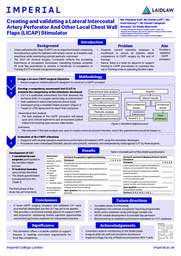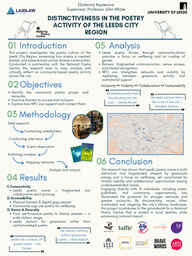Leadership in Action Summer 2021
Through the Tufts University Laidlaw program, we collaborated on our Leadership in Action project by partnering with the Boston Design Academy, housed within the Timothy Smith Network. We were supervised by Nona Cheeks, a consultant with the program, who helped us lead our own team of volunteers. With these volunteers, and the help of Nona, we created a curriculum guide for the Fall 2021 class of Boston Design Academy students. Our course was centered around health fitness technology and product innovation. We named it “Tech Your Fitness”, and our summer took off from there.
Over the course of the last couple of months, starting in late April and going until the end of August, we researched personal fitness products, the history of wearable technology, the impact that fitness has on overall health, and many more fitness and health related topics to include in our curriculum. To aid the teacher of the course in their planning, we also created posters and matrices to illustrate the research that we had done and hopefully communicate the importance of the material to the students. As the students will be around eighth and ninth grade, we knew that they would have a basic understanding of personal fitness and technology, but we did a lot of work to help them understand how the two can be connected.
To expand our knowledge of health fitness technology, we attended information sessions on Tinkercad, a free website that allows engineers to visually create a wide array of products. Additionally, we took part in an interactive week-long course on Design-Based Thinking, led by Professor Intriligator, who teaches in the Tufts Engineering department. We learned how to advertise the program and how to tailor the course to best suit the needs of the students.
Our program’s intended participants are 8th and 9th graders in the Boston school system, so we wanted to ensure that they would stay engaged and interested in their learning throughout the project.
Some important elements that we discussed were thinking about the wants and the fears of the students, along with ways to publicize the event. We first discussed TikTok and scavenger hunts to bring students into our program. Further research into this showed that TikTok would be outside of our budget range, and that the scavenger hunts could be dangerous if students were walking late at night or were on their phones, unaware of their surroundings. In order to share information on our event in a cost-effective, yet strategic manner, we decided to make fliers using Canva.
We each created advertisements for three different groups: students, teachers, and possible business partners. For students, we hoped that young adults who are passionate about technology, or who want to expand on their knowledge of personal fitness, design, and engineering, would join our program. We also sought to find a teacher with experience in these fields to lead the course. Lastly, we made advertisements so that any Boston or local companies that focus on health technology could serve as guest speakers or potential partners for the Boston Design Academy in the fall.
We divided our curriculum into three modules: one focused on personal fitness, one focused on technology, and one focused on the creation of the students’ own health fitness devices. In the first module, the students will learn about the social determinants of health that can affect personal fitness. These include access to green space, clean and safe air, and nutrient-dense and available food. We thought that this was important as food desserts, air pollution, and lack of space to perform physical exercise could all be barriers that the students would have to think about as they designed their own product. We also included going over the previous knowledge that the students were bringing to the course, as well as their comfortability level with health fitness in general. Furthermore, the first module will be brought to a close with the discussion of different current health fitness technology companies, such as FitBit, WHOOP, Apple, and Samsung Galaxy. We included this for the students to see what companies are already tackling personal fitness devices and give them ideas of what is already on the market. We also hope that this deep dive into current companies will inspire students to look for perceived flaws in their devices and what they might want to fix when creating their own devices at the end of the course.
For the second module, the students will learn more about the field of health technology and begin to brainstorm what they like about the field and what products they would change. They will get to look more closely at current devices and learn about the technological components that make up the watches and bands that we use. They will be introduced to computer technology that they can use to model their potential product and even get the chance to talk to some product engineers and creators. Along with every other module, we have included guest speakers here to give the students a chance to talk to people in the field and engineers, so they can learn more about health fitness technology from the experts.
The third module is where the students will start to create their personal fitness technological products. Most of the class time in this module is devoted to giving the students time to work on their drafts of their products, discuss their ideas with their peers, and present their final product to the rest of the class. It is important that their final product is tangible and could actually be used by consumers. We included in our course plan a budget for Boston Design Academy that included a 3D printer and other tools to help the students create this product.
We both designed infographics throughout the course of the project. Our infographics addressed topics such as health concerns in Boston and social determinants of health, the evolution of personal fitness products, and matrix comparing different watches currently on the market. We mainly focused on fitness watches, such as the Apple Watch, Garmin Vivoactive, FitBit, and WHOOP, which is created by a Boston-based company. However, our research did not only involve watches. We also learned about rings such as the Oura ring and the BodiMetrics CIRCUL Sleep & Fitness Ring Tracker. These devices monitor similar activities as the watches, yet are far more compact and sleek, in our opinion.
Another area of personal fitness products that we researched were e-textiles and smart shoes. For example, a collaboration between Nike and Apple resulted in a shoe that helps athletes monitor the stats of their run, in terms of distance and speed. At MIT, the Media Lab is home to a variety of interesting products, but one that most closely aligned with the interests of the program was E-TeCS. This subgroup of the Media Lab designs a shirt with sensors throughout that detects heart rate, temperature, and respiratory rate. We hoped that a member of the lab could speak at the event, but unfortunately, they did not respond to the email. On a brighter note, we reached out to several professors and doctors. We are excited to have Tufts speakers and a cardiovascular doctor at Vanderbilt present for the students this fall.
Through this experience, we both learned a lot about creating a curriculum from scratch as well as collaborating together as leaders with the volunteer team.




Please sign in
If you are a registered user on Laidlaw Scholars Network, please sign in